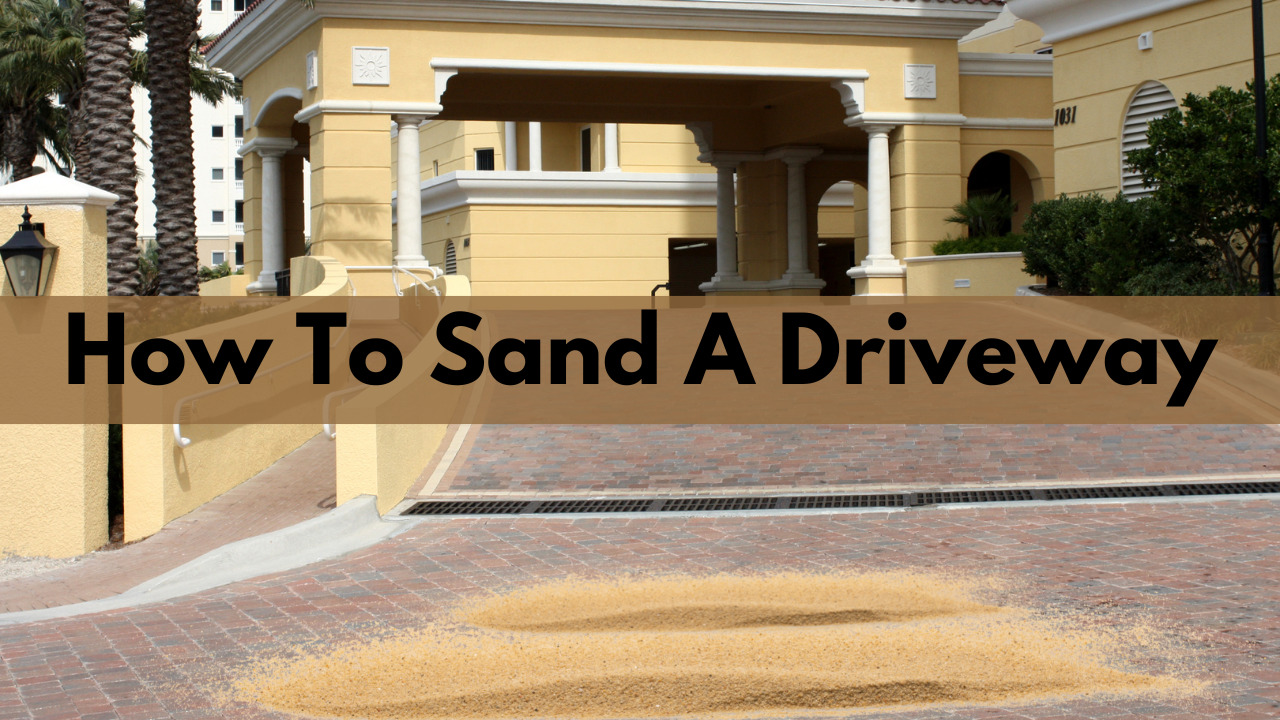You can bring out the shine in your concrete by sanding the driveway. Sanding concrete surfaces is a satisfying home repair activity you can display to your guests if you use the appropriate tools and pay attention to cleanliness.
An in-depth tutorial on how to sand concrete has been created, complete with a list of required supplies. Words like snowfalls and wind chill pushed to the back of your memory are brought up again during the winter months.
The weeds and moss are not removed by soft washing, another cleaning method. To eliminate the filth, this technique uses chemicals. This results in very minimal sand loss and little impact on weed control.
Table of Contents
Clean Your Driveway Before Sanding
The block paving must first be thoroughly cleaned before being sanded and sealed. When block paving is cleaned, it is prepared for re-sanding and sealing because you remove all the extra muck from your driveway and make it ready for things like sand and sealer that are truly going to safeguard your driveway or block paving.
You probably need to pressure wash your block paving if you haven’t done so in a few years because, over time, all kinds of things may have developed and been stuck to the pavers.
Pressure Wash The Concrete Driveway Before Sanding Or Sealing
Although using a pressure washer at a very high level can be the best way to clean block paving quickly and thoroughly, be careful not to be overly aggressive. When using a pressure washer, the block paving is more severely damaged than it would be with regular use.
Today’s market is filled with various cleaning supplies that simplify cleaning. Spraying the solution on the paving is required, followed by a brief wait period to allow the mosses and algae to die off naturally. Then, it is simple to pressure wash the area clean.
Steps To Sand Concrete Driveway
Use Sander To Sand Large Areas
Sand manually for finer details or use sanders to smooth up excessively rough concrete. If your concrete surface is small, features the artwork you’d like to preserve, or is already reasonably smooth, sand it by hand.
This method makes sanding narrow spots easier and reduces the likelihood of over sanding. Consider using an electric tool for large, rough surfaces. Although it takes longer, wet sanding increases pad life. Faster but with more dust is dry sanding.
Clean The Driveway
Brush or vacuum away any loose material. After that, wash the surface with water and liquid dish soap. Use a sponge and clean water to rinse away the soapy residue. Before continuing, let your concrete surface thoroughly dry. It can take a while or even overnight.
While you are sanding, particles that become caught under a sander can scrape up the concrete’s surface and create damage.
Fix Cracks And Gaps
To fix holes and level the surface, spread concrete patching slurry. Choose a slurry or patch close in color to your cement to hide the filled fissures. With a trowel, evenly distribute the slurry over the concrete, pressing forcefully to remove any air pockets.
To make the surface level with the concrete, smooth it out. Any small overfilling of a hole is acceptable. It will be sanded afterward to remove any lumps that develop once the slurry dries.
Use Electric Sander Or Sanding Pad To Sand Driveway
Sand, the entire surface area, starts with the hardest bumps. Sand the concrete surface in portions using a coarse pad, whether a machine or a hand-held one. Maintaining level contact with your sander, sand portions from the corners toward the center.
Use a portable sanding pad to smooth up little areas or corners your electric sander can’t reach. Set your sander in confined spaces and check for spaces between the disc and the concrete.
Stroke upwards against the roughness of the sanding pad if you’re using a hand sander.
Wipe Out All Dust
Wet sanding produces a wet concrete slurry, while dry sanding produces dust. Stop after the first hard sanding and clean the concrete of any dust. Sanding slurry can be cleaned with water, a dry cloth, or a sponge. Dry dust should be brushed or vacuumed away.
Regular cleaning lowers the possibility of grinding tough dirt into the surface and offers you a clean slate to sand. Some dry sanders incorporate a vacuum attachment or dust container to capture concrete dust while you operate.
Re-sand The Concrete Surface
An even, smooth surface is produced by using increasingly finer sanding pads. When you’re through, clean the concrete and re-sand it with a fine pad. Use finer sanding pads as you clean and sand until the desired smoothness is achieved.
There is no set requirement for how frequently you should sand concrete. Everything depends on how polished you want it to be and how rough it is.
Use An Epoxy Sealant For Sanded Concrete Driveway
Your concrete will look new and pristine for many years with sealant. By the finish’s recommendations, you should normally use a paintbrush to apply a sealant to corners and edges before using a roller to cover the surfaces.
To avoid becoming imprisoned while sealing a concrete floor, start your work away from a door and go toward it. To prevent breathing in dangerous vapors, make every effort to ventilate the room or area.
Review all directions regarding preparing the concrete and cleaning up to ensure optimum safety and the best application.
Conclusion
Sand accumulation in the joints is one of the major problems with block paving. The primary cause of sand loss over time is rain wash, a question frequently asked. There is a good chance that some sand will be washed away by running rainwater if your patio or driveway is sloped.
You can solve this problem in a few different ways, such as using polymeric jointing sand or sealing the joints with a sealer.





